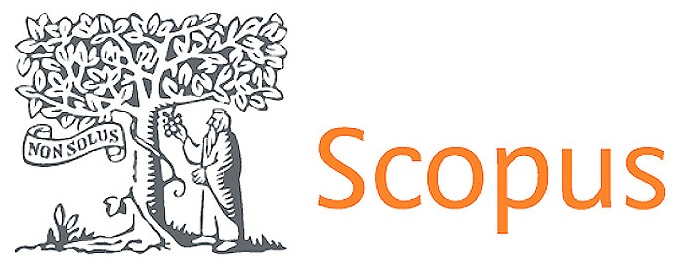Orthodontic treatment in patients with different clinical profiles
DOI:
https://doi.org/10.56294/sctconf2024.106Keywords:
Dental rehabilitation, Orthodontic treatment, Postoperative complications, Clinical resultsAbstract
Introduction: Dental autotransplantation has proven to be an effective alternative to dental implants, especially in young patients with good periodontal health, by offering functional and aesthetic solutions. This study has analyzed the feasibility of autotransplantation in six patients with various clinical conditions, comparing the effectiveness with that of dental implants in terms of functionality, periodontal health and long-term success.
Methods: A qualitative-quantitative approach that combined literature review and a quasi-experimental design was used to evaluate the influence of several factors on healing and tissue response. The Entropy and COPRAS methods were applied to determine the relative importance of factors and classify clinical cases, identifying the most impactful ones and prioritizing those that required urgent interventions.
Results: Autotransplants achieved a high success rate, with good periodontal integration and functionality in most cases. However, healing showed variability, highlighting the influence of individual factors such as periapical infection and smoking in case 5, and severe malocclusion in case 4. These factors required additional interventions to ensure long-term stability and functionality.
Conclusions: Dental autotransplantation has been effective in young patients with good periodontal health, as long as meticulous planning and correct selection of the donor tooth is carried out. Variability in healing accentuates the need for personalized approaches and interdisciplinary collaboration, as well as the exploration of technological innovations to optimize the technique
References
[1] R. L. Santos de Andrade et al., "A VIABILIDADE DO AUTOTRANSPLANTE DENTÁRIO NA REABILITAÇÃO ORAL," Revista CPAQV - Centro de Pesquisas Avançadas em Qualidade de Vida, vol. 16, no. 1, p. 8, 2024. [Online]. Available: https://revista.cpaqv.org/index.php/CPAQV/article/view/1576. DOI: https://doi.org/10.36692/V16N1-100R
[2] K. F. Cazar and C. S. B. García, "Una alternativa biológica: el autotrasplante dental," Gaceta dental: Industria y profesiones, vol. 344, no. 2022, pp. 132-151, 2022. [Online]. Available: https://dialnet.unirioja.es/servlet/articulo?codigo=8391184.
[3] L. F. P. Solís, E. P. R. Toledo, and A. J. A. Carruyo, "Autotrasplante dentario: aplicaciones tecnológicas y éxito del tratamiento," Revista Información Científica, vol. 103, no. 1 Sup, p. 4523, 2024. [Online]. Available: https://revinfcientifica.sld.cu/index.php/ric/article/view/4523.
[4] C. Fernández-Gutiérrez, A. Andrade-Valderrama, C. Rosas-Méndez, and S. Hernández-Vigueras, "Evaluación de Protocolos de Autotrasplante Dental Guiado y sus Tasas de Supervivencia y Éxito. Una Revisión Sistemática," International journal of odontostomatology, vol. 18, no. 1, pp. 77-84, 2024. [Online]. Available: https://www.scielo.cl/scielo.php?pid=S0718-381X2024000100077&script=sci_arttext&tlng=en. DOI: https://doi.org/10.4067/S0718-381X2024000100077
[5] A. Abdou, M. Matoug‐Elwerfelli, V. Nagendrababu, H. Nazzal, and M. Duggal, "Tooth auto‐transplantation: A bibliometric analysis of the top 100 most‐cited articles," Dental Traumatology, vol. 39, no. 1, pp. 64-81, 2023. [Online]. Available: https://onlinelibrary.wiley.com/doi/full/10.1111/edt.12779. DOI: https://doi.org/10.1111/edt.12779
[6] M. P. Miranda, A. L. Villacis, A. A. Peñafiel, E. P. Paltas, and D. S. F. Cuvi, "Control Radiográfico de Trasplante Dentario: Reporte de Caso," Revista de la Facultad de Odontologia de la Universidad de Buenos Aires, vol. 39, no. 91, pp. 35-39, 2024. [Online]. Available: https://revista.odontologia.uba.ar/index.php/rfouba/article/view/199. DOI: https://doi.org/10.62172/revfouba.n91.a199
[7] J. Tramullas, "Temas y métodos de investigación en Ciencia de la Información, 2000-2019. Revisión bibliográfica," El profesional de la información, vol. 29, no. 4, pp. 2-6, 2020. [Online]. Available: https://revista.profesionaldelainformacion.com/index.php/EPI/article/view/77328. DOI: https://doi.org/10.3145/epi.2020.jul.17
[8] C. Zhang, L. Tian, and H. Chu, "Usage frequency and application variety of research methods in library and information science: Continuous investigation from 1991 to 2021," Information Processing and Management, vol. 60, no. 6, pp. 4-8, 2023. [Online]. Available: https://www.sciencedirect.com/science/article/abs/pii/S0306457323002443. DOI: https://doi.org/10.1016/j.ipm.2023.103507
[9] G. Yang, M. Ren, and X. Hao, "Multi-criteria decision-making problem based on the novel probabilistic hesitant fuzzy entropy and TODIM method," Alexandria Engineering Journal, vol. 68, no. April, pp. 437-451, 2023. [Online]. Available: https://www.sciencedirect.com/science/article/pii/S1110016823000285. DOI: https://doi.org/10.1016/j.aej.2023.01.014
[10] I. M. Hezam, A. R. Mishra, P. Rani, A. Saha, F. Smarandache, and D. Pamucar, "An integrated decision support framework using single-valued neutrosophic-MASWIP-COPRAS for sustainability assessment of bioenergy production technologies," Expert Systems with Applications, vol. 211, no. January, pp. 2-6, 2023. [Online]. Available: https://www.sciencedirect.com/science/article/abs/pii/S0957417422017092. DOI: https://doi.org/10.1016/j.eswa.2022.118674
[11] J. Lu, S. Zhang, J. Wu, and Y. Wei, "COPRAS METHOD FOR MULTIPLE ATTRIBUTE GROUP DECISION MAKING UNDER PICTURE FUZZY ENVIRONMENT AND THEIR APPLICATION TO GREEN SUPPLIER SELECTION," Technological and Economic Development of Economy, vol. 27, no. 2, pp. 369-385, 2021. [Online]. Available: https://journals.vilniustech.lt/index.php/TEDE/article/view/14211. DOI: https://doi.org/10.3846/tede.2021.14211
[12] G. Wei, J. Wu, Y. Guo, J. Wang, and C. Wei, "AN EXTENDED COPRAS MODEL FOR MULTIPLE ATTRIBUTE GROUP DECISION MAKING BASED ON SINGLE-VALUED NEUTROSOPHIC 2-TUPLE LINGUISTIC ENVIRONMENT," Technological and Economic Development of Economy, vol. 27, no. 2, pp. 353-368, 2021. [Online]. Available: https://journals.vilniustech.lt/index.php/TEDE/article/view/14057. DOI: https://doi.org/10.3846/tede.2021.14057
13. Campos-Silva SA, Padilla-Proaño PL. Hidrocoloides irreversibles mezclados con clorhexidina y agua ononizada: tiempo de gelificación y reproducción de detalle. Rev Inf Cient [Internet]. 2023;102(2 Sup). Disponible en: https://revinfcientifica.sld.cu/index.php/ric/article/view/4388
14. Leyva Vázquez MY, Estupiñan Ricardo J, Batista Hernández N. La Neutrosofía como herramienta para abordar la vaguedad lingüística en el análisis de textos de dilemas ético. Dilemas contemp: educ política valores [Internet]. 2024 [cited 2024 Sep 14]; Available from: https://dilemascontemporaneoseducacionpoliticayvalores.com/index.php/dilemas/article/view/4018. DOI: https://doi.org/10.46377/dilemas.v11i2.4018
Published
Issue
Section
License
Copyright (c) 2024 Yamily González Cardona, Mayra Alexandra Sánchez Barreno (Author)

This work is licensed under a Creative Commons Attribution 4.0 International License.
The article is distributed under the Creative Commons Attribution 4.0 License. Unless otherwise stated, associated published material is distributed under the same licence.



